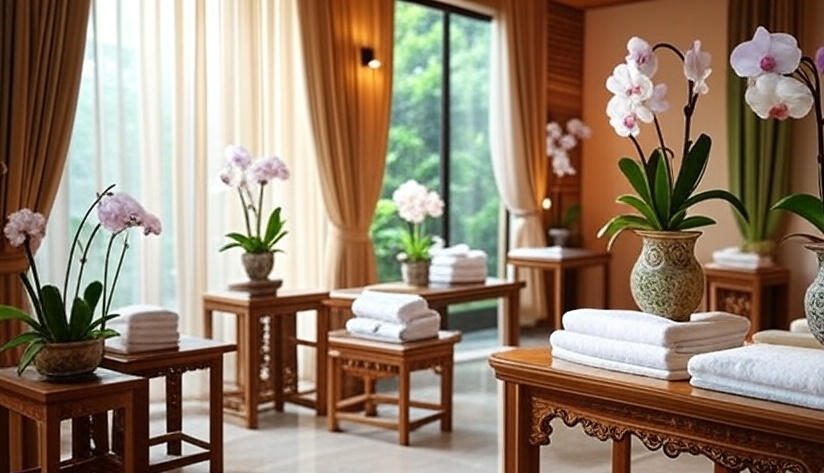
Commercials for massage parlors in Bangkok captivate audiences with their sleek visuals and subtle promises of relaxation. These ads, often aired on local television or shared online, strike a balance between cultural sensitivity and bold marketing. They’re more than just promotional clips; they’re a window into Thailand’s spa culture, where wellness meets sensuality. Understanding their messaging requires a sharp eye for media literacy, as these ads navigate censorship, cultural norms, and subliminal marketing with finesse.
Take a typical ad for a Bangkok nuru massage. The camera glides over candlelit rooms, soft towels, and glistening oils, creating an atmosphere of calm luxury. Slow-motion shots of water droplets or a masseuse’s gentle touch emphasize sensory pleasure. Yet, these visuals aren’t random. They’re carefully crafted to evoke desire without crossing legal or cultural lines. Thailand’s strict advertising regulations demand modesty, so explicit content is off-limits. Instead, advertisers rely on suggestion—soft lighting, soothing music, and ambiguous smiles—to convey a sense of intimacy. This approach hooks viewers while staying within bounds.
Censorship’s Tight Grip
Thailand’s media landscape is heavily regulated. The government enforces strict rules on content deemed too provocative. Massage parlor ads must avoid overt sensuality, which poses a challenge for businesses promoting services that inherently involve intimacy. How do you sell a sensual experience without showing it? Advertisers get creative. They use metaphors like flowing water or blooming flowers to symbolize relaxation and connection. These symbols resonate with Thai audiences, who are accustomed to reading between the lines. Meanwhile, the censors approve, and the message still reaches its intended audience.
However, this delicate dance can backfire. Some viewers misinterpret the subtlety, assuming the ad promises more than it delivers. Others, especially tourists, may not grasp the cultural context and see the ads as overly suggestive. This gap in perception highlights a key lesson in media literacy: what you see isn’t always what you get. Decoding these ads requires an understanding of both the intent and the cultural context.
Subliminal Marketing at Play
Beyond censorship, subliminal marketing plays a huge role. These ads don’t just sell a service; they sell a fantasy. The settings—opulent spas with marble floors and orchids—suggest an air of exclusivity. The music, often featuring traditional Thai instruments combined with modern beats, taps into cultural pride while remaining contemporary. Even the models are carefully chosen. They’re relatable yet aspirational, embodying a polished version of the everyday Thai or the curious visitor. This blend makes the experience feel accessible yet special.
Interestingly, these ads often target specific audiences. Locals might respond to nods to Thai traditions, like herbal compresses or Buddhist-inspired serenity. Tourists, on the other hand, are drawn to the exotic allure of a faraway escape. Advertisers are aware of this and tailor their visuals accordingly. A single ad might use different edits for local TV versus YouTube, each version leaning into the audience’s expectations. It’s a masterclass in audience segmentation.
Cultural Nuances and Ethical Questions
Cultural nuances profoundly shape these ads. Thailand’s spa culture is rooted in ancient healing practices, yet modern massage parlors often cater to a global clientele. Ads must bridge this divide, honoring tradition while appealing to international tastes. For example, references to Thai massage techniques, such as Tok Sen (wooden hammer tapping), signal authenticity. However, the glossy, Western-style production values ensure the ad feels universally appealing. This balance keeps the industry thriving, with Bangkok’s spas drawing millions of visitors annually.
Yet, ethical concerns linger. Some ads skirt the line between wellness and exploitation, especially in areas known for less reputable establishments. The phrase Bangkok soapy massage often carries a stigma, hinting at services that go beyond relaxation. Responsible advertisers steer clear of this gray area, instead focusing on legitimate spa experiences. Still, the industry’s reputation can taint even the most ethical campaigns. Media literacy helps viewers distinguish between reputable spas and those with questionable practices. Asking questions like “What’s the ad really selling?” or “Who benefits from this message?” empowers consumers to make informed choices.
READ ALSO: How to Choose A personal Masseuse
The Bigger Impact
These commercials do more than promote a service. They shape perceptions of Bangkok’s wellness scene. For locals, they reinforce pride in Thailand’s spa heritage. For tourists, they create an image of indulgence and escape. But they also spark debates about representation and ethics. Are these ads empowering or objectifying? Do they celebrate culture or commodify it? The answers depend on how you watch them. A media-literate viewer sees the layers—artistry, strategy, and cultural weight—behind every frame.
Ultimately, Bangkok’s massage parlor ads are a fascinating blend of creativity and constraint. They navigate a complex web of rules, desires, and traditions to sell an experience that’s both personal and universal. Next time you see one, pause. Look beyond the glossy surface. You’ll find a story of ethics, imagery, and impact waiting to be unpacked.

